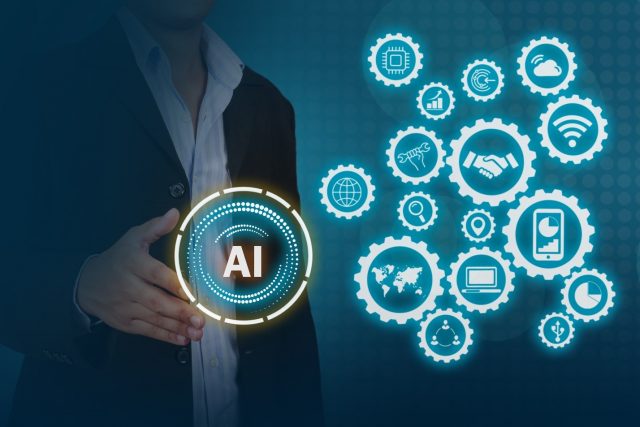In the rapidly evolving landscape of technology, Artificial Intelligence (AI) is proving to be an increasingly powerful force for positive change, particularly in the realm of accessibility for people with disabilities. Krishna Tyner, a passionate advocate for inclusive technology, sheds light on how AI is making a substantial difference in the lives of individuals with disabilities, highlighting potential pitfalls to consider when utilizing AI in your Universal or Accessible Design implementation.
Assistive Technology Revolutionizes Communication and Learning
One of the most transformative applications of AI in the realm of accessibility is the development of assistive technologies that cater to the communication and learning needs of individuals with disabilities. Krishna Tyner emphasizes how AI-driven tools break down barriers by providing tailored solutions for those facing challenges in traditional communication methods.
With its vast potential for individuals with disabilities, AI-supported assistive technology can help to facilitate effective communication, make arduous tasks more manageable or eliminate them completely, and provide additional learning tools in Universal Design for Learning (UDL) environments, where the teaching approach aims to accommodate the needs and abilities of all learners while eliminating unnecessary hurdles in the learning process. while fostering a conducive learning environment.
How?
It’s already happening. For those who are blind or visually impaired, AI can help them access information with screen readers. Real-time captions allow those who are deaf or hard of hearing to access video content — and AI can help filter extraneous content to help those with cognitive disabilities focus on what’s important. Communication devices powered by AI, such as text-to-speech applications and speech recognition software, enable those with speech disabilities to express themselves more fluidly and accurately. Additionally, AI-driven educational tools can be streamlined and adapted to individual learning styles, making education more accessible and personalized for students with diverse needs. These are tools that many people now rely on to access content and navigate the world.
Connectivity and Community Building Through AI
Krishna Tyner recognizes the crucial role that connectivity plays in the lives of individuals with disabilities. Someone whose disability makes communication challenging may experience isolation, a profoundly, emotionally difficult byproduct that could be avoided with better tools for connectivity. AI is capable of not only enhancing personal connections but also fostering a sense of community and support. Social platforms and communication tools powered by AI algorithms are being designed with accessibility principles such that everyone can participate in online discussions and connect with others equitably.
Krishna Tyner notes that AI has the potential to create a more inclusive digital world by removing barriers to social interaction and community engagement. Whether through voice-activated interfaces, gesture recognition, or other AI-driven features, many individuals with disabilities can now participate in online communities, mitigating the isolation that their disability may have created.
Quality of Life: Bridging Gaps with AI
AI’s impact on the quality of life for individuals with disabilities extends to everyday living. Krishna Tyner evaluates how AI continually streamlines tasks and activities, making daily life more manageable for those with accessibility needs. AI can help stimulate brain function for people with cognitive disabilities, bridging gaps in their abilities. Machine Learning (ML), an AI discipline where machines can automatically learn from data and past experiences to identify patterns and make predictions with minimal human intervention, is an excellent tool for simulated human cognitive skills. This is particularly useful when analyzing the cognitive activity and functional gaps of those with disabilities to automatically train AI-assisted machines as complementary intelligence or artificial personal cognitive assistants for those people.
Krishna Tyner explains that assistive technologies powered by AI are becoming more than just tools; they enable independence and autonomy. Smart home devices, for example, can be programmed to respond to voice commands, allowing individuals with mobility issues to control their environment more easily. Artificial intelligence can recreate voices that may have otherwise been lost to disease or disability, giving those with neurological diseases, such as Amyotrophic lateral sclerosis (ALS), a means of communicating in a voice they feel best represents their own.
Additionally, AI-driven navigation apps on wheeled devices, such as chairs and carts, provide real-time information about accessible routes, enhancing independence and mobility.
Pitfalls to Navigate
While AI holds tremendous promise in accessibility, Krishna Tyner underscores the importance of addressing potential pitfalls. Two significant challenges that demand attention are bias and errors in AI systems.
Bias in AI algorithms can perpetuate and even exacerbate existing inequalities. Krishna Tyner warns that, if training data used to develop AI systems is not diverse and representative, the resulting algorithms may inadvertently and inherently discriminate against certain groups. Implementing comprehensive testing and validation processes is essential to identify and rectify AI system biases, ensuring fair and equitable outcomes for all users.
As Krishna Tyner cautions, errors in AI systems can have serious consequences, especially for individuals relying on these technologies for essential tasks. From misinterpretations of user inputs to inaccuracies in decision-making processes, errors in AI systems can compromise the reliability and safety of assistive technologies. The definition of disability is high nuanced and diverse, and any approach to accessibility must be conducted with that in mind. This is why rigorous testing, continuous monitoring, and prompt updates are crucial to minimizing the risk of errors and ensuring the optimal functioning of AI-driven accessibility tools.
One way to avoid such pitfalls is to follow the Universal Design Principles when designing anything. Whether it is a building, a webpage, a dynamic application, or especially when planning for people with disabilities, keep in mind the primary precept of inclusive design: “Nothing About Us Without Us,” which states that no policy or tool should be decided or designed without the full and direct participation of affected members of the group(s).
Empowering Inclusivity through AI
In the hands of advocates like Krishna Tyner, AI is a force for positive change in the field of accessibility. From revolutionizing communication, streamlining tasks, and making learning environments more inclusive to fostering connectivity and community while improving the overall quality of life, AI is opening doors that were once firmly shut for individuals with disabilities. The path toward a fully inclusive digital landscape requires careful monitoring and navigation to avoid the pitfalls, and by addressing these challenges head-on, Krishna Tyner and others in the field are paving the way for a future where technology truly empowers and includes everyone.









